While pulsed Nd:YAG lasers are ideal for welding highly reflective materials such as precious metals, copper, and some aluminum alloys, they haven’t been as suitable for high-carbon steels, casting alloys, and a range of other aluminum alloys.
But ongoing research suggests that changing the shape of pulsed laser welding improves weld penetration and quality in these difficult-to-weld applications.
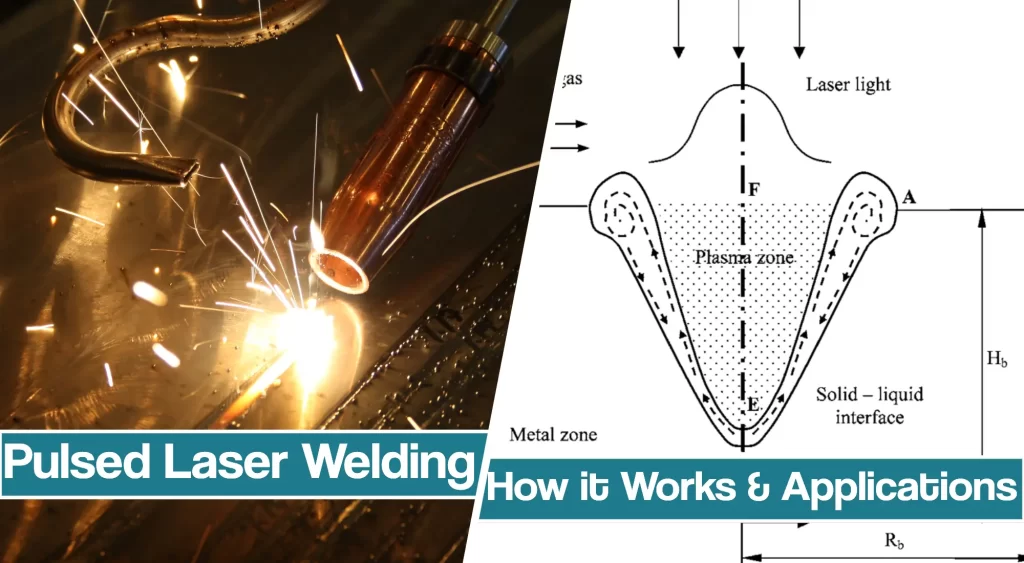
Pulse Laser Welding Performance
How a pulsed laser performs depends on pulse energy, pulse length, pulse height, and repetition rate.
The pulse energy is the energy per pulse of the laser, and the pulse length is the length of time of a pulse.
The height of a laser pulse is the laser’s peak power measured in kW, while the repetition rate is the number of pulses per second.
These factors are controlled by power supplies that deliver high peak powers during individual laser pulses, making them capable of offering greater materials processing capabilities than their average power rating might indicate.
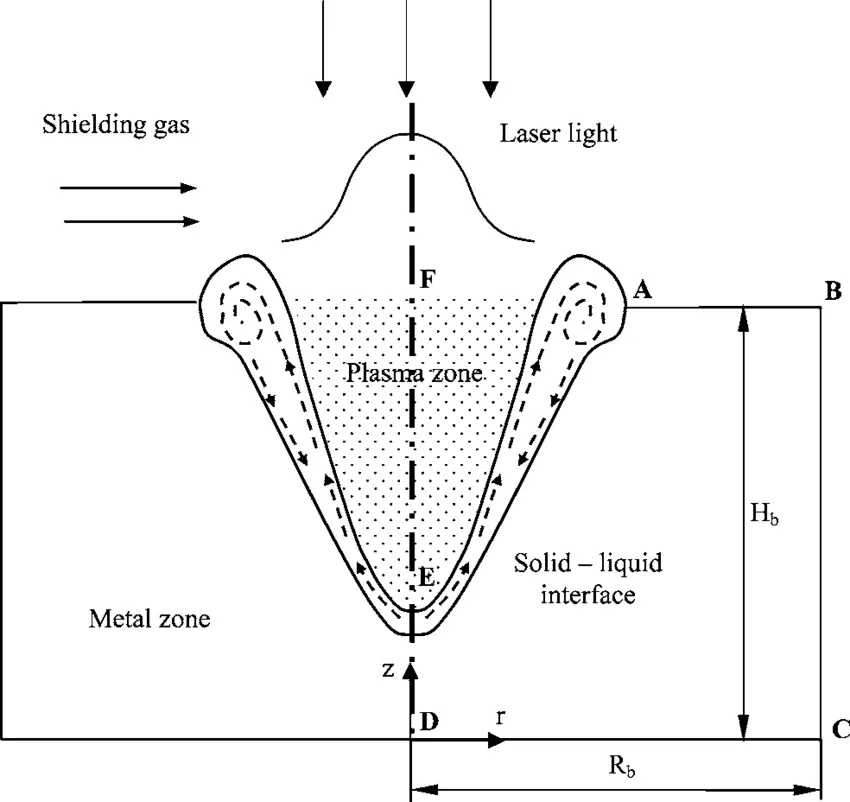
In the 1980s, GSI Lumonics developed the first switch-mode DC power supply for pulsed lasers. This system created almost any shape of pulse waveform through software control.
At that time, creating a consistent pulse shape was considered an important innovation. Older pulsed YAGs had capacitor-discharge power supplies.
Changing the laser’s pulse duration involved connecting it to different capacitors, and inductors called a pulse-forming network, which produced different pulse durations. Shapes varied with the capacitor voltage and couldn’t be reliably tailored. But controlling the pulse peak power and duration in real-time introduces what is now known as “pulse shaping.”
We also wrote extensively about laser welding in general in our separate article.
Pulse Shaping
“Shaping” a pulse is simply adding sectors of specific height and width to a standard main sector to build it up, similar to taking building blocks of different sizes and aligning them next to one another to create “shape.”
The standard pulse shape has a single sector called the main sector, while shaped pulses have two or more sectors.
In a shaped pulse, the main sector is always the last sector; all additional sectors used to occur at the beginning of the pulse.
The length of each added sector varies from 0.3 to 20 msec in 0.1 msec increments. The height of each sector adjusts from 0% to 100% of the laser’s specified peak power.
The energies required for pulsed laser welding depend on the pulse shapes.
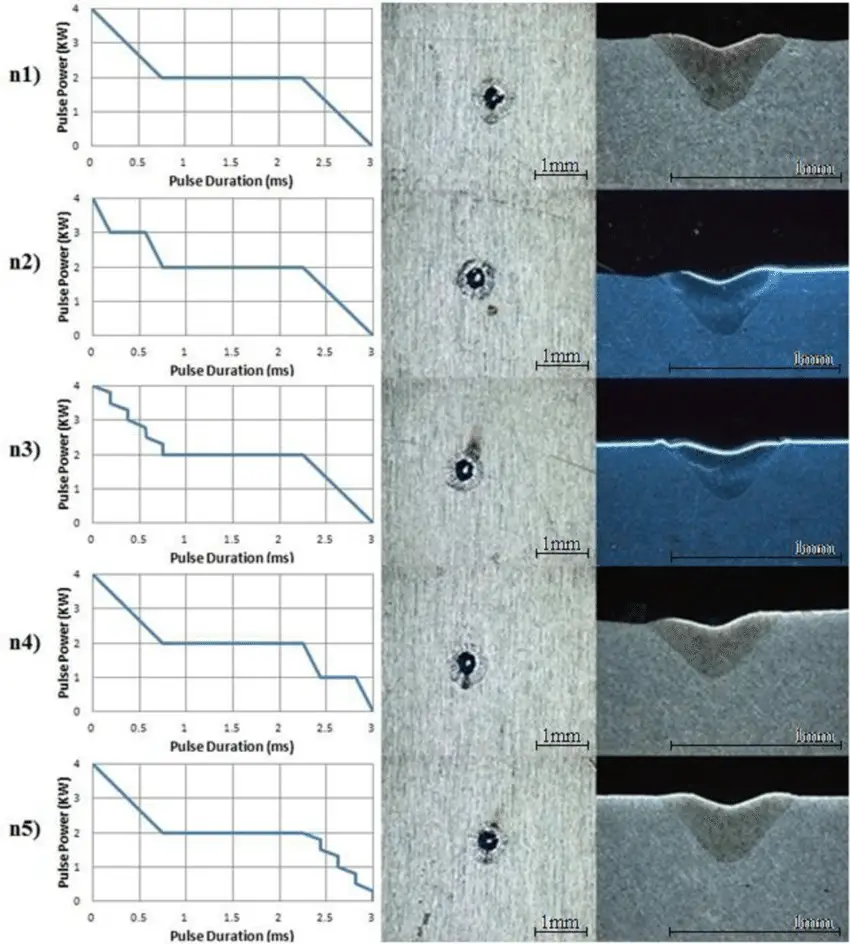
If extra sectors are added for slow cooling or surface cleaning, then the energy in those additional sectors doesn’t increase penetration. Instead, it vaporizes contaminants or handles bulk heating.
This increases the energy used for the same weld penetration and can reduce lamp life or increase cycle times slightly. However, shops will find those small prices to pay and almost always worth the boost in quality. On the other hand, increasing the initial spike to improve coupling makes the process more efficient.
Ramp-down or Cool-down Pulse Shaping
A ramp-down pulse shape reduces weld cracks and porosity with high-carbon steels, crack-sensitive alloys, casting alloys with voids or contaminants, or materials with dissimilar melting points.
Steels containing >0.25% C can create an extremely hard phase called martensite in the weld and heat-affected zone due to the fast cooling rates of laser welding.
Similarly, crack-sensitive alloys such as 2000 and 6000-series aluminum, as well as some high-strength steels, can benefit from this shaping.
In all of these cases, combining the normal single or main welding sector with sectors of lower peak power slowly reduces the laser energy going into the weld nugget, allowing slower cooling.
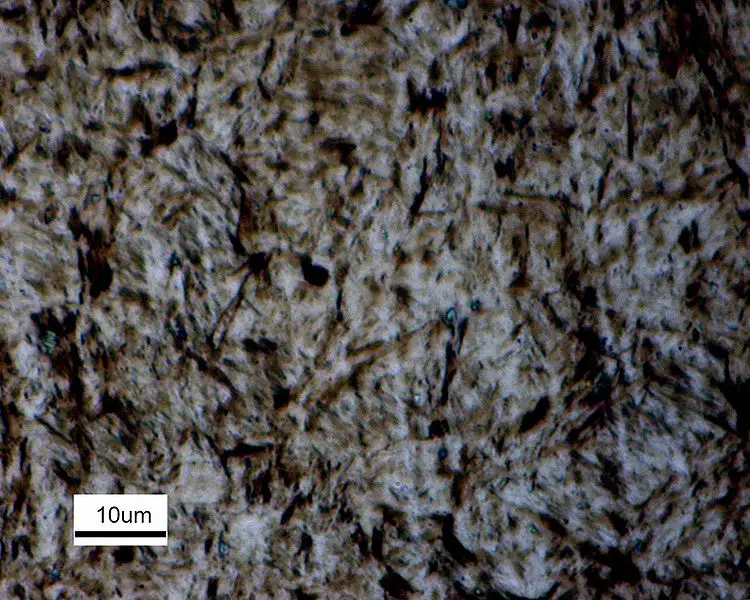
In some applications, it is possible to have more than 10 sectors in this type of pulse shape, although usually 3-5 is sufficient.
Ramp-up Pulse Shaping
Materials with low melting points and reflectivity and materials with volatile contaminants, coatings, and/or platings will benefit from ramp-up pulse shaping during welding.
This shape slowly increases the intensity of the weld pulse until much later in the melt. The ramp-up technique is appropriate for materials such as castings with porosity and low-density powder metallurgy or materials with plating in the weld zone.
Enhanced-Spike Pulse Shaping
This type of pulse shaping is well-suited to welding reflective materials with high conductivity, such as high-purity copper, silver, and some aluminum alloys.
It also handles applications involving highly reflective surfaces and those with large focused spot sizes.
In this shaping, the first 0.5 to 5 msec pulse can be of a much higher peak than the following sector(s). Once the initial spike begins surface melt, the absorption rate increases by a factor of about 20. This, in turn, allows the rest of the laser-pulse energy to be reduced significantly. This energy reduction makes coupling much more consistent, while reducing weld spatter.
Pulse Laser Welding Hard to Weld Materials
The high peak power of pulsed Nd:YAG lasers overcomes the thermal diffusivity and reflectivity of many reflective materials. Some materials, though, crack or produce welds with unacceptable porosity or other defects.
The welding of dissimilar or contaminated materials often produces the same undesirable results.
But a research team composed of GSI Lumonics’ process development and applications personnel — Dr. Mohammed Naeem, Richard Jessett, and Thomas Kugler — have repeatedly demonstrated the benefit of pulse shaping on various challenging materials.
The basic pulse has a single-sector, rectangular shape with an initial over-shoot spike.
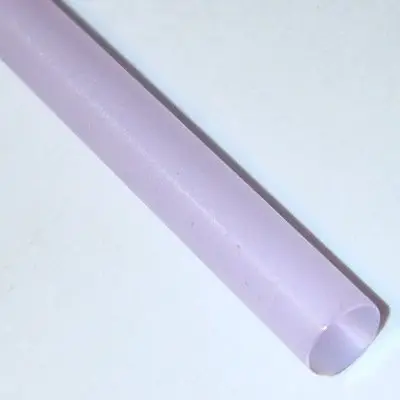
This standard pulse is often adequate for welding ferrous alloys without coating/plating or similar YAG-cutting applications. However, pulse-shaping plays a considerable role in welding quality and consistency in drilling or welding highly reflective, dissimilar, or contaminated materials.
Experimental Parameters
As outlined below, this technology provides the highest beam quality to ensure fast processing speeds, long working distances, and small spot sizes.
Welding trials investigated the effect of power density on weld depth, using the three different weld shapes outlined. Three pulse times (2.0, 5.0, and 7.0 msec) were used; the spot diameter was kept constant at 300 µ. Full laser parameters used during these trials follow.
Conclusion
The enhanced spike pulse results in the highest penetration, followed by the standard pulse; the ramp-up pulse produces the lowest penetration.
In addition to these changes in the weld-depth penetration using different pulse shapes, there is a significant change in the appearance and quality of the welds.
Welds made with the enhanced spike and the standard-pulse shapes are splattery, with excessive undercut, whereas welds made with ramp-up and ramp-down shapes have reduced spatter and undercut.
Micrographs of the welds made in 430 stainless steel with standard and ramp-down pulse shapes show that the weld made with standard-pulse shape had porosity near the surface of the weld. The weld made with the ramp-down pulse shape had reduced penetration but no porosity.
In addition, the ramp-down pulse shape reduces cracking. Although the standard and enhanced-spike pulse shapes show better results in terms of weld penetration, the cooling cycle is relatively high. As a result, occluded gas and cracks may form during solidification. Ramp-down pulse controls the cooling rate, and, hence, reduces solidification cracking.
Due to their high reflectivity and conductivity, aluminum alloys can be challenging to work with in welding applications. But experiments show that the weld-penetration depth is significantly higher with the enhanced-spike pulse shape.
Tailoring pulse shape can improve weld penetration and quality. Standard-pulse and the enhanced-spike pulse shape increase weld penetration compared to the ramp-up and ramp-down shapes.
The results were similar for both stainless steel and aluminum alloys.
Welds produced with standard-pulse and enhanced-spike shapes contained porosity and solidification cracks. The ramp-down pulse produces crack and porosity welds, especially in stainless. The improvement is from using different cooling rates for the various pulse shapes.





